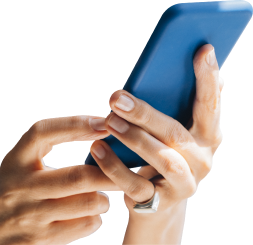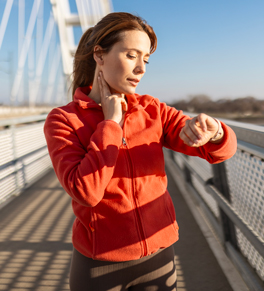
Left Ventricular Assist Device (LVAD)
If other heart failure treatments are no longer helping, an LVAD could help you live longer and more comfortably.
Our approach to LVAD
When you’re living with heart failure, you often can’t participate in normal daily activities. While there are many treatments to help ease your symptoms, heart failure gets harder to treat in its advanced stages.
At that point, your UCI Health heart failure team may recommend a left ventricular assist device (LVAD). An LVAD is an implantable pump that helps your heart function properly — improving your overall health and quality of life.
UCI Health is the only health system in Orange County to offer this lifesaving device to people who have advanced heart failure. Our expert heart failure team has helped hundreds of people with heart failure live longer, more active lives with LVAD.
Your care team will work with you to determine if an LVAD is right for you. They’ll do this by discussing:
- How your symptoms affect your quality of life
- Other treatments you’ve tried
- How an LVAD works
- How an LVAD could help you
- The risks and benefits of getting an LVAD
How does an LVAD work?
An LVAD is an implantable device that effectively takes over the function of your heart’s main pumping chamber.
Your heart surgeon will implant the device in your chest through open-heart surgery.
Here’s how an LVAD works:
- The device is powered by two batteries that are attached to a cable.
- During the surgery, your surgeon will implant the device and then tunnel the cable to the outside of your body on your abdomen
- The cable will attach to a controller on the outside of your body.
- The controller runs the device and sends you messages to help operate the system.
- The controller is portable, and you can wear it on a strap or belt.
- You can be mobile for up to 20 hours without recharging the battery.
Am I a candidate for an LVAD?
You may be a candidate for an LVAD if:
- Your heart failure symptoms are getting worse.
- You cannot tolerate other heart failure medications due to side effects or other medical conditions.
- You are in the advanced stages of heart failure with other issues like kidney, lung or liver dysfunction.
- You are awaiting a heart transplant.
We offer LVADs to help people with heart failure in two ways:
- Before heart transplant: If you are a candidate for a heart transplant, you may get an LVAD while you await the lifesaving heart transplant.
- In addition to giving you more time, the LVAD can also help improve your quality of life before transplant. In some cases, your LVAD may actually improve your heart failure so well that you no longer need a heart transplant.

Schedule a consultation
Meet with our heart failure team to see if an LVAD is right for you. Call 714-UC-HEART (714-842-3278), or
Benefits of LVAD
An LVAD is a lifesaving treatment for advanced stage heart failure. Therefore, the biggest benefit of an LVAD is that it can allow you to live a longer life.You’ll also likely notice a significant improvement in your quality of life. An LVAD helps your heart function properly, which can alleviate heart failure symptoms like fatigue, shortness of breath and more.
This allows you to be more active and participate more fully in daily activities. With an LVAD, you can potentially live a normal, active life for several years after the procedure.
What to expect with LVAD surgery
Getting an LVAD is a major procedure. Your care team must implant it into your heart through open-heart surgery. The procedure takes about four to six hours.
At UCI Health, we have an experienced team dedicated to ensuring every step of this complex surgery goes smoothly. Because this is open-heart surgery, your team will take several steps before implanting the LVAD, including:
- Giving you general anesthesia to keep you asleep throughout the procedure
- Putting you on a ventilator to help you breathe
- Connecting you to a heart-lung bypass machine to take over your heart and lung function during the surgery
During the surgery, your heart surgeon will implant the LVAD into your chest. They’ll pass a tube from the device to the control pack outside of your body.
After LVAD surgery
Immediately after your LVAD surgery, you’ll recover in our cardiac intensive care unit (ICU) for several days. In the ICU, your care team will remove the ventilator, take you off the heart-lung bypass machine and monitor you.
Because this is a major surgery, you’ll recover for about two to three weeks in the hospital. You’ll work with a number of specialists throughout your hospital stay including:
- Physical therapists
- Occupational therapists
- Dietitians
- Hospitalists
- Cardiologists
- Heart surgeons
- Cardiac rehab specialists
Together, your care team will ensure that you recover smoothly and that your LVAD works properly. They’ll also educate you about how your LVAD works and what to expect living with an LVAD.
Follow-up care after LVAD surgery
After leaving the hospital, you’ll continue your recovery at home for several weeks before returning to your normal daily activities.
You’ll also have 24-hour access to an LVAD specialist at UCI Health from the moment you are discharged from the hospital. They’ll address any issues or concerns and help communicate with your care team.
You’ll have frequent follow-up appointments to:
- Monitor your recovery and progress
- Ensure the device functions properly
- Prevent any complication
Why choose UCI Health for LVAD?
Multidisciplinary care
If you need an LVAD, you’ll have a multidisciplinary team of heart failure specialists in your corner at UCI Health. This includes heart surgeons, cardiologists, nurse practitioners, physical therapists and more. Your team will guide you every step of the way before, during and after the procedure.
We also offer a support group that meets on the second Thursday of each month. View the Advanced Heart Failure and VAD Support Group page for upcoming dates.
Partnership with referring physicians
As the only academic health system in Orange County, UCI Health specializes in treating people with even the most advanced heart failure. Other cardiologists throughout the region routinely refer and transfer patients to our LVAD program.
Nationally recognized heart failure care
Our multidisciplinary heart failure care team focuses on alleviating your symptoms and strengthening your heart health. With a combination of expertise, research and innovation, we offer you the most comprehensive heart failure care available. This is just one reason our program earned the Gold Seal of Approval certification from The Joint Commission. It’s also why we consistently earn the American Heart Association’s Gold Plus Award for meeting the highest standard of care for heart failure.
We're also the only DNV LVAD-accredited program in Orange County since 2019, which means
Leaders in heart failure research
We were the first health system in the region to offer LVAD to people who have heart failure. And we continue to pave the way for new treatments. As the only academic health system in Orange County, UCI Health leads and participates in research and clinical trials. These trials look at new ways to treat heart failure and other types of heart disease. That means you may have access to treatments that are not yet widely available.
Referring physicians
If you care for a heart-failure patient, timing is critical. People who should be considered for LVAD include:
- Patients whose symptoms are getting worse, particularly within the same year
- Patients who are intolerant to optimal heart failure medications because of hypotension, side-effects or other clinical reasons
- Patients who are in class III or class IV heart failure with evidence of end-organ dysfunction, especially rising levels of the waste product creatinine and decreasing muscle mass and serum protein
Physician's referral criteria are:
- EF < 25% or less
- Creatinine >2 baseline
- >1 HF hospitalization in the last year
- NYHA class III-IV
- Intolerant of an optimal dose of any guideline-directed medical therapy drug
Evaluation services
As a designated LVAD center, UCI Health provides LVAD evaluations (both in-patient and outpatient), LVAD surgery, management of LVAD complications (medical and surgical) and partnership with designated heart transplant centers.
We are committed to forming partnerships with physicians in Orange County and the region. We welcome you to present your patients at our open-selection committee meeting, which is held on Thursday afternoons.
This is an opportunity to collaborate and offer patients the latest in advanced heart-failure care. We also provide training to assist in the transition back to the care of primary cardiologists.
We will always be available to help manage ongoing LVAD issues, but we value and protect the relationships that are developed between you and your patients.
The degree of post LVAD-implant involvement of referring cardiologists will be at their discretion.
Patient story: Elizabeth Vayssie
As the first person to receive an LVAD at UCI Health, Elizabeth Vayssie shares how this lifesaving device has helped her live a longer, fuller life.
Featured Blog Posts

MIND food: Blissful recipes to boost brain health

A heart attack that strikes younger healthy women





